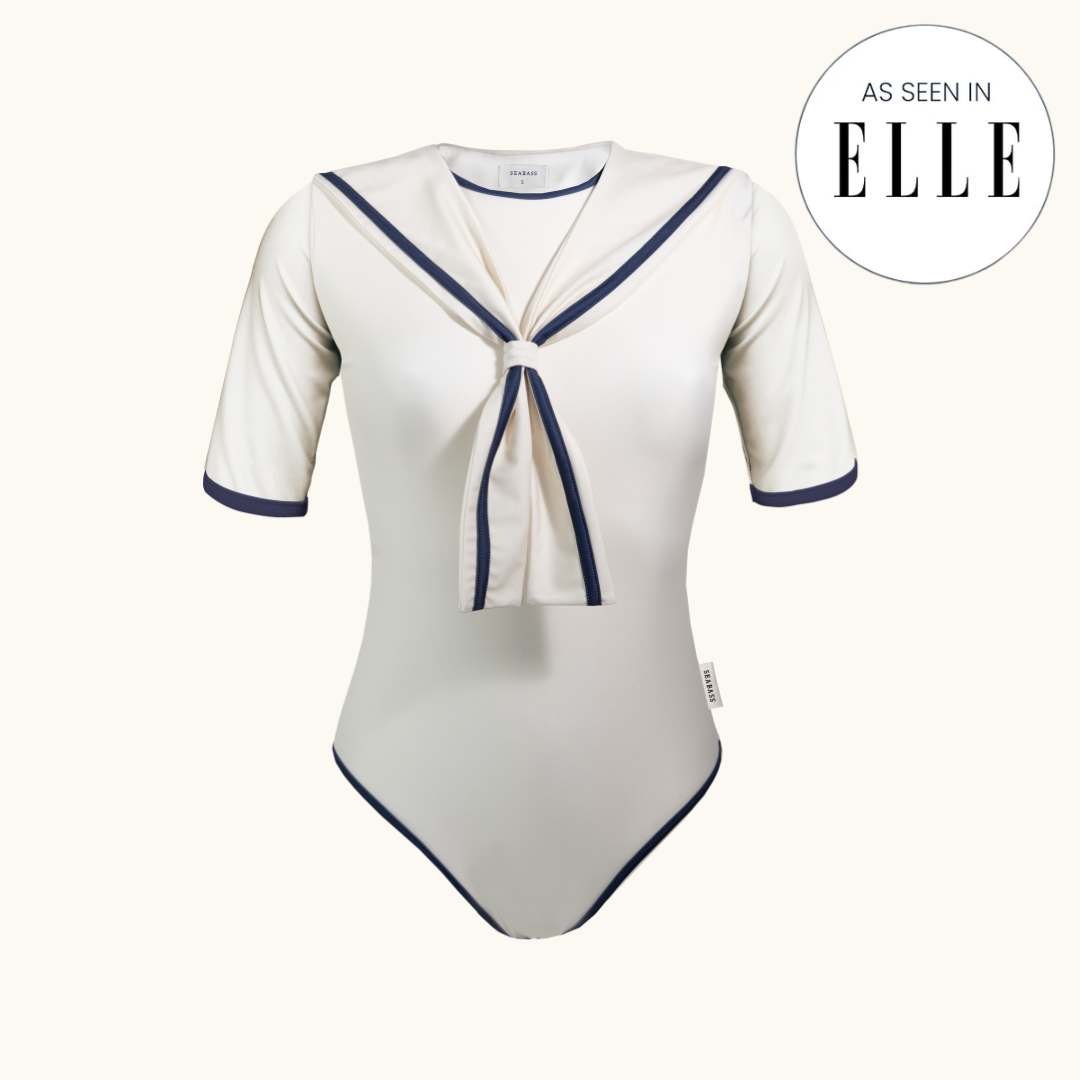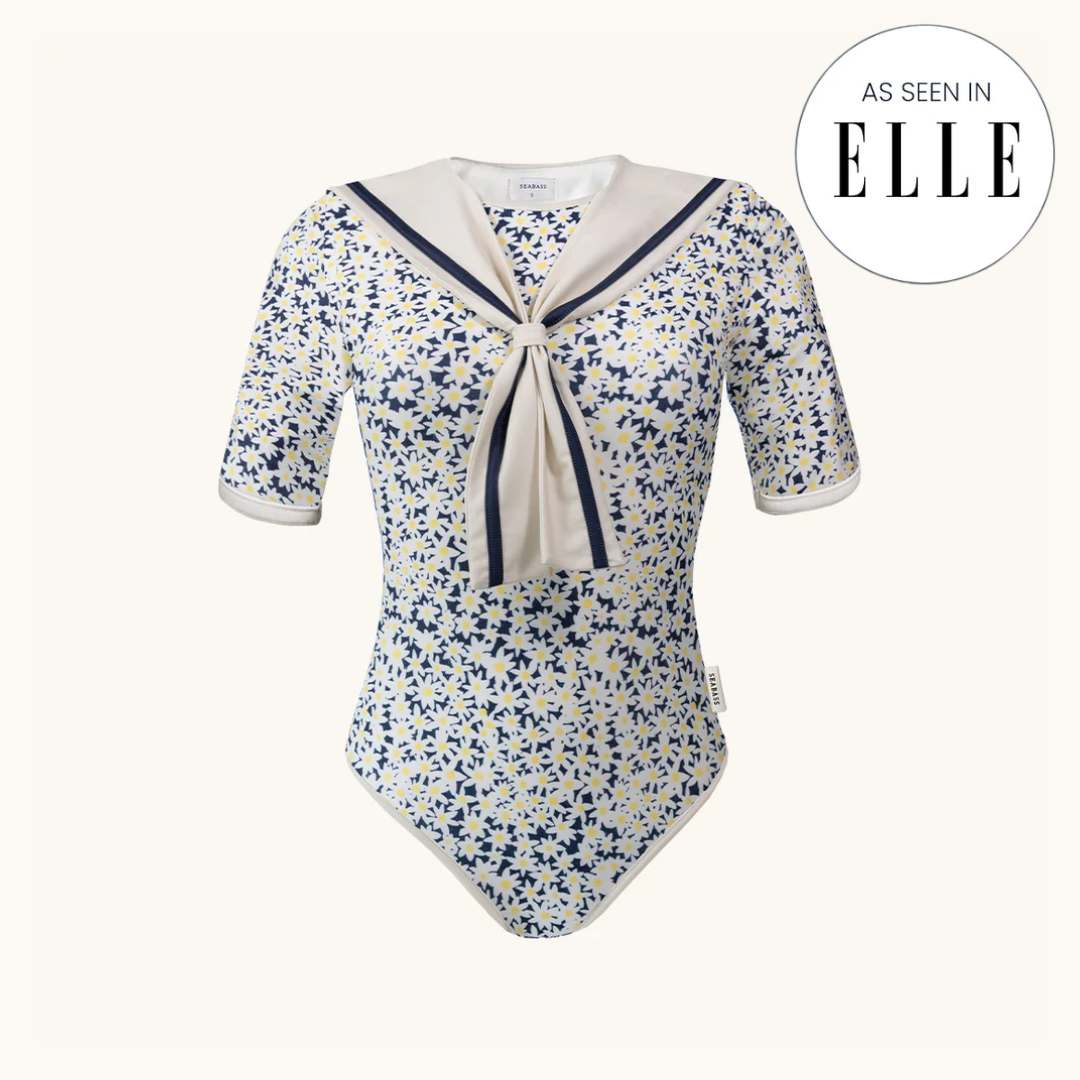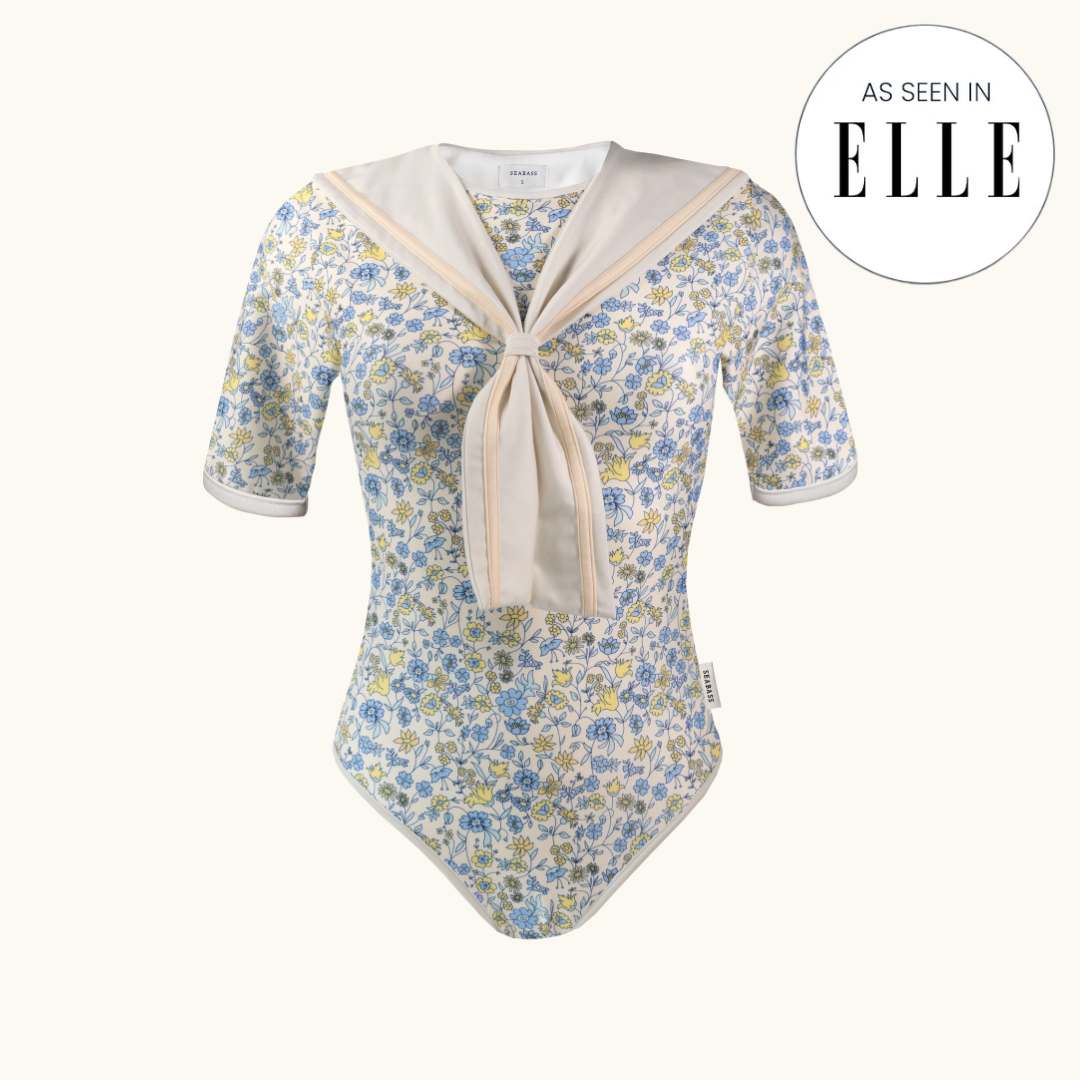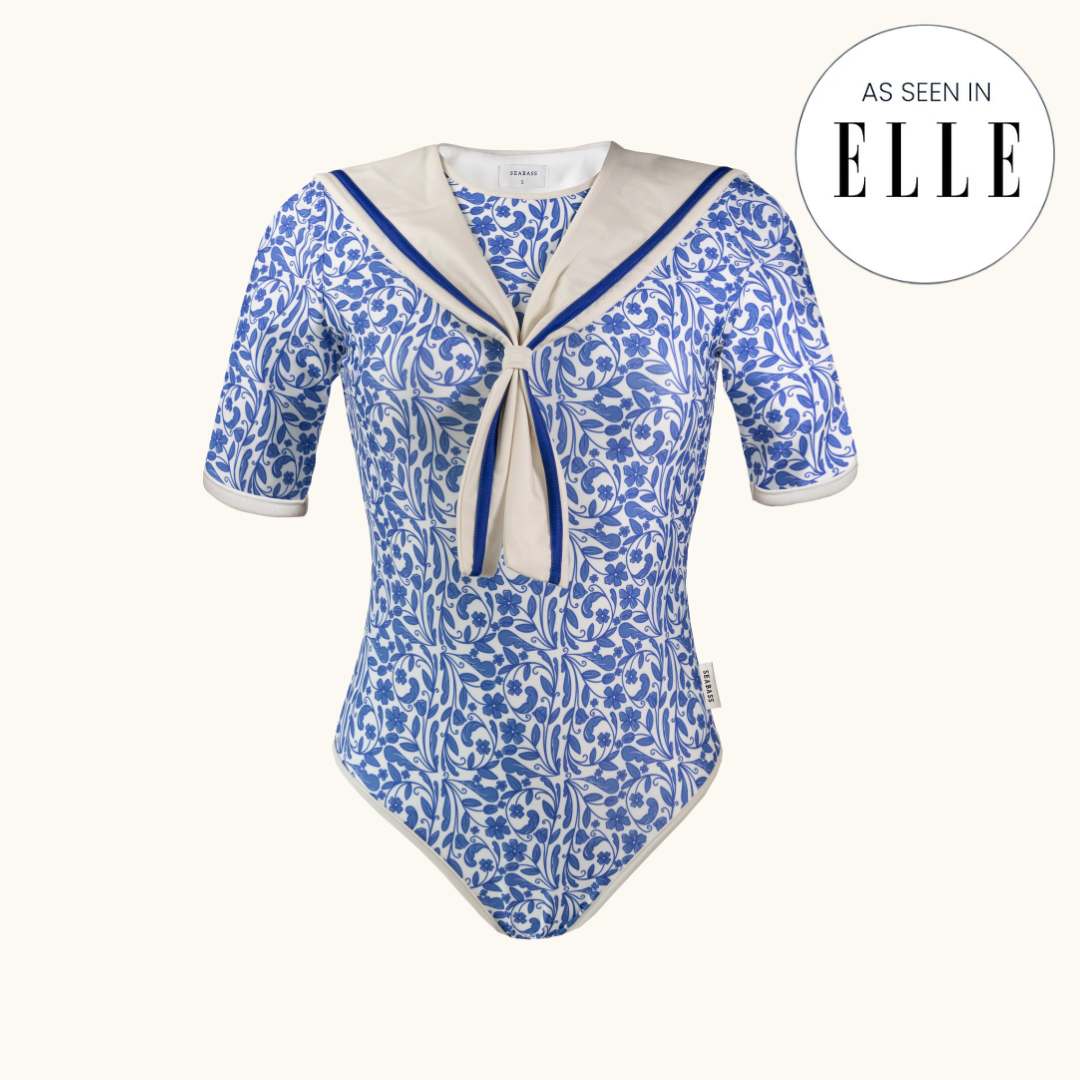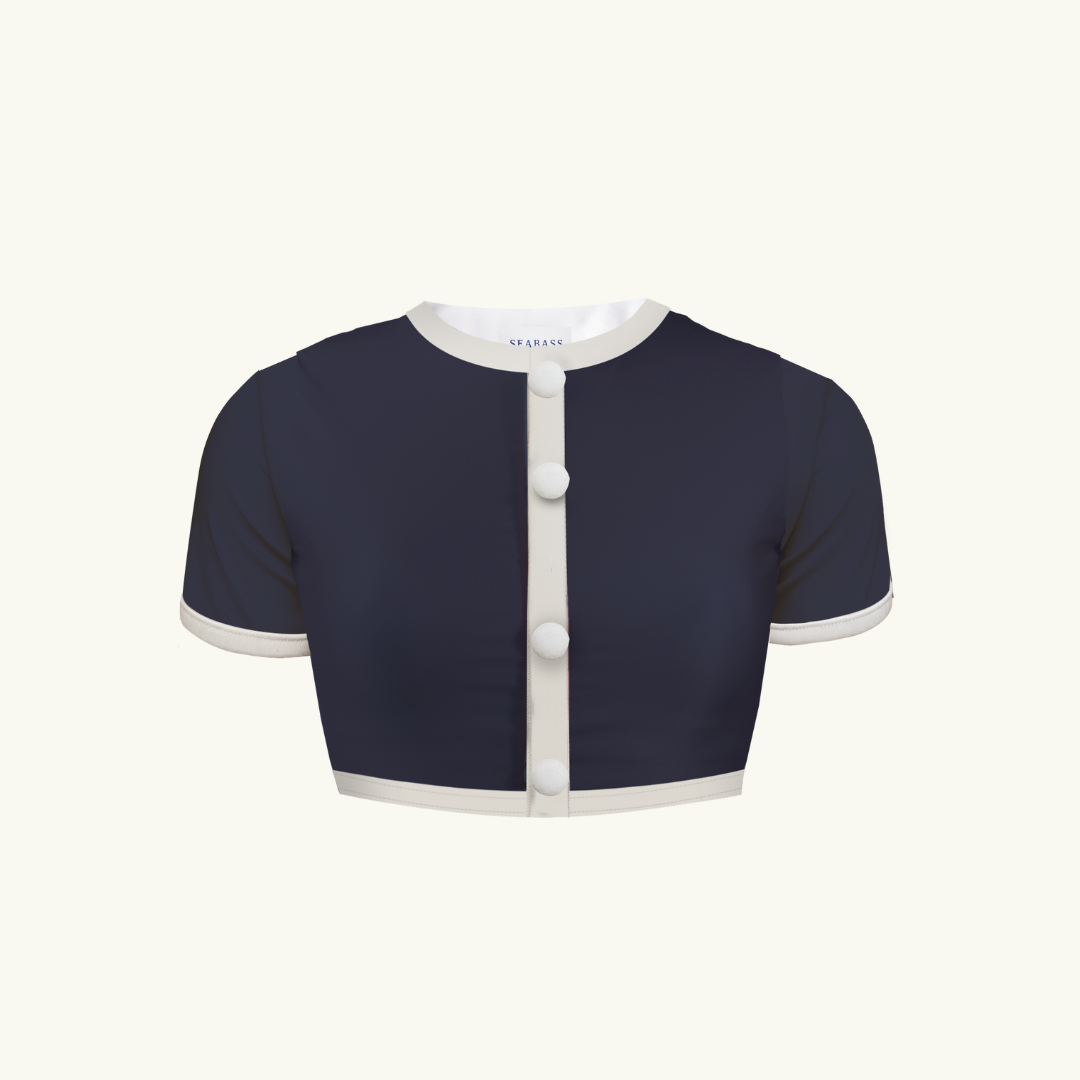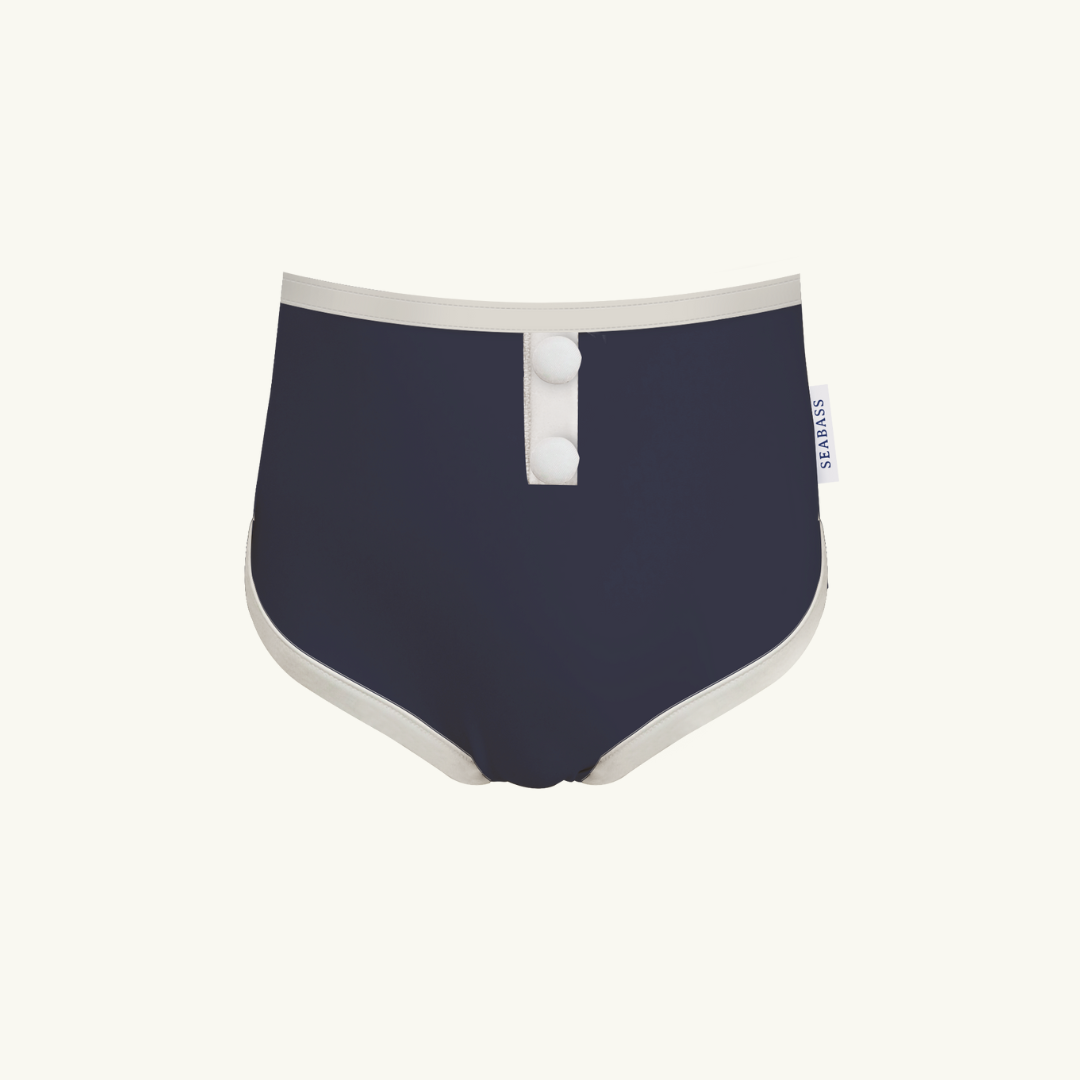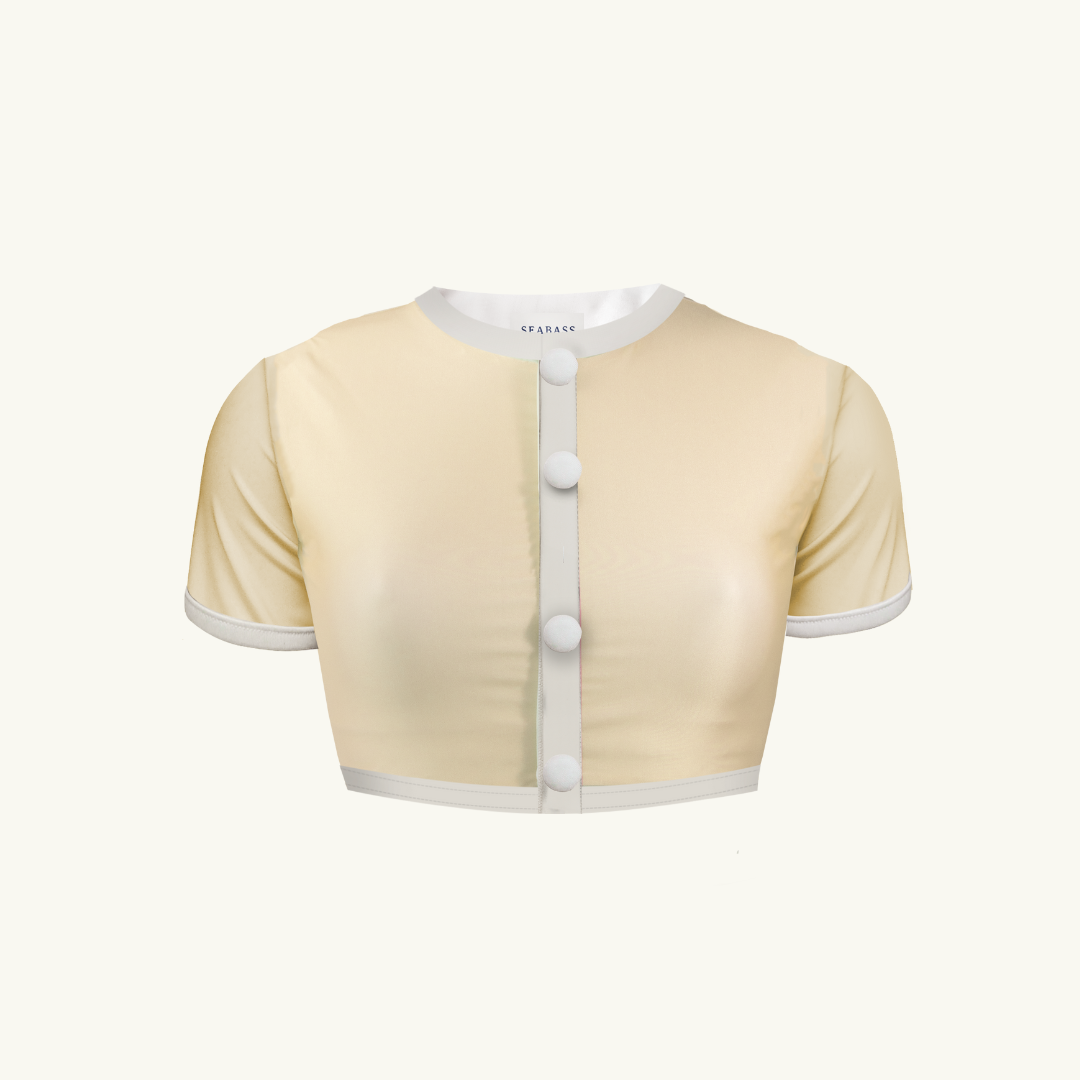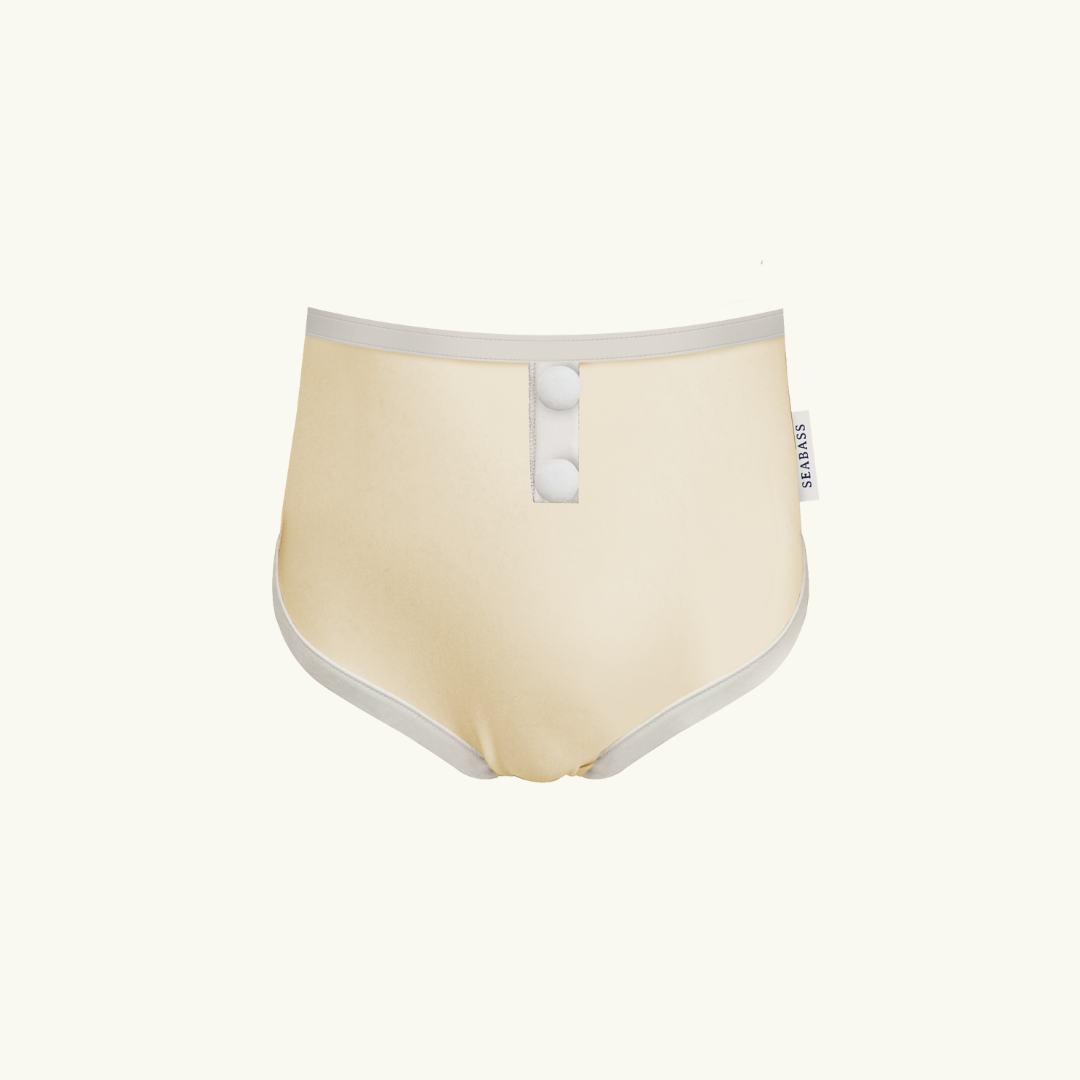
Greta Bellamacina on the Neo Riviera
Actress and poet Greta Bellamacina shares her taste for the NEO RIVIERA style, as well as her latest film roles and writing projects.
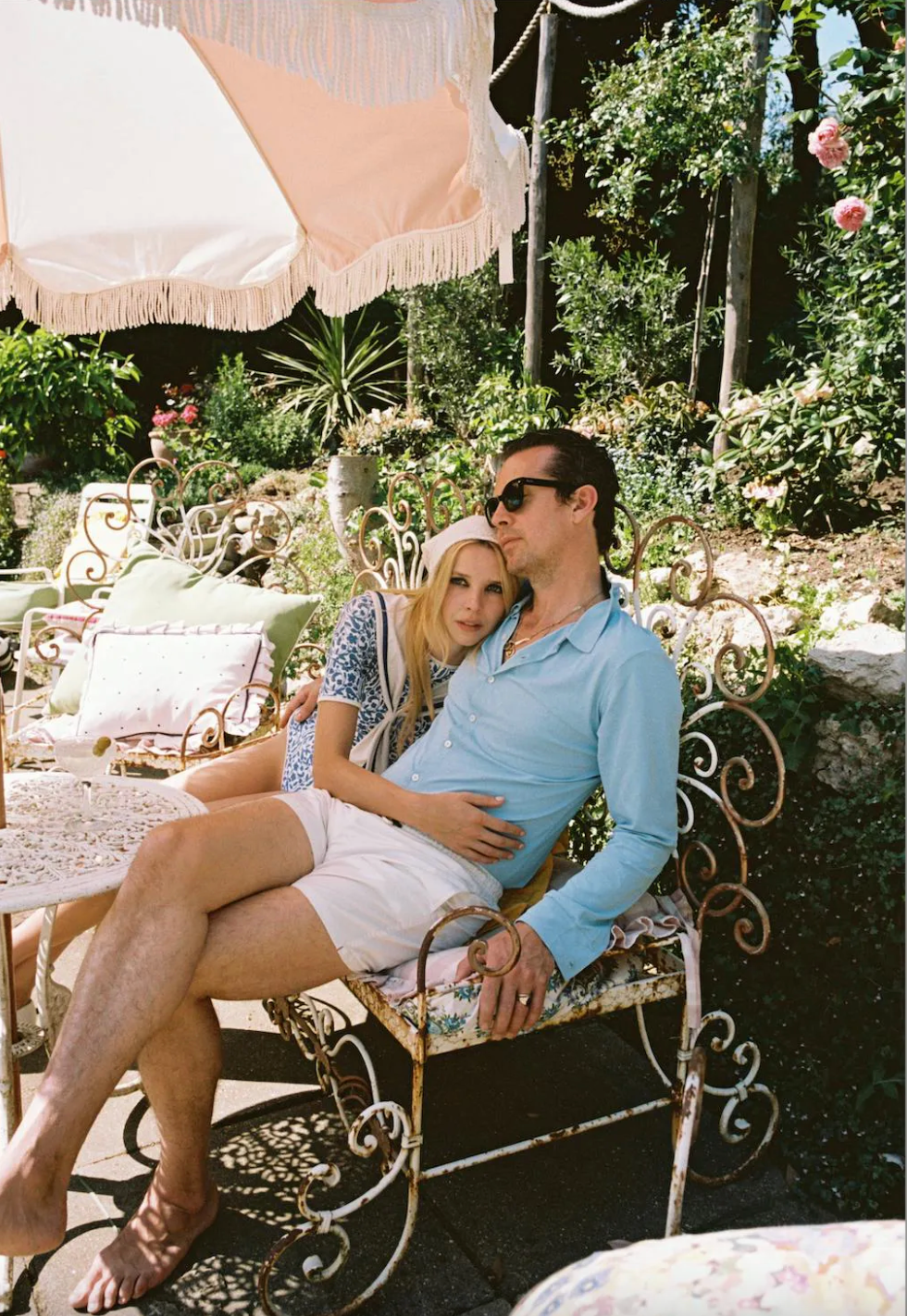
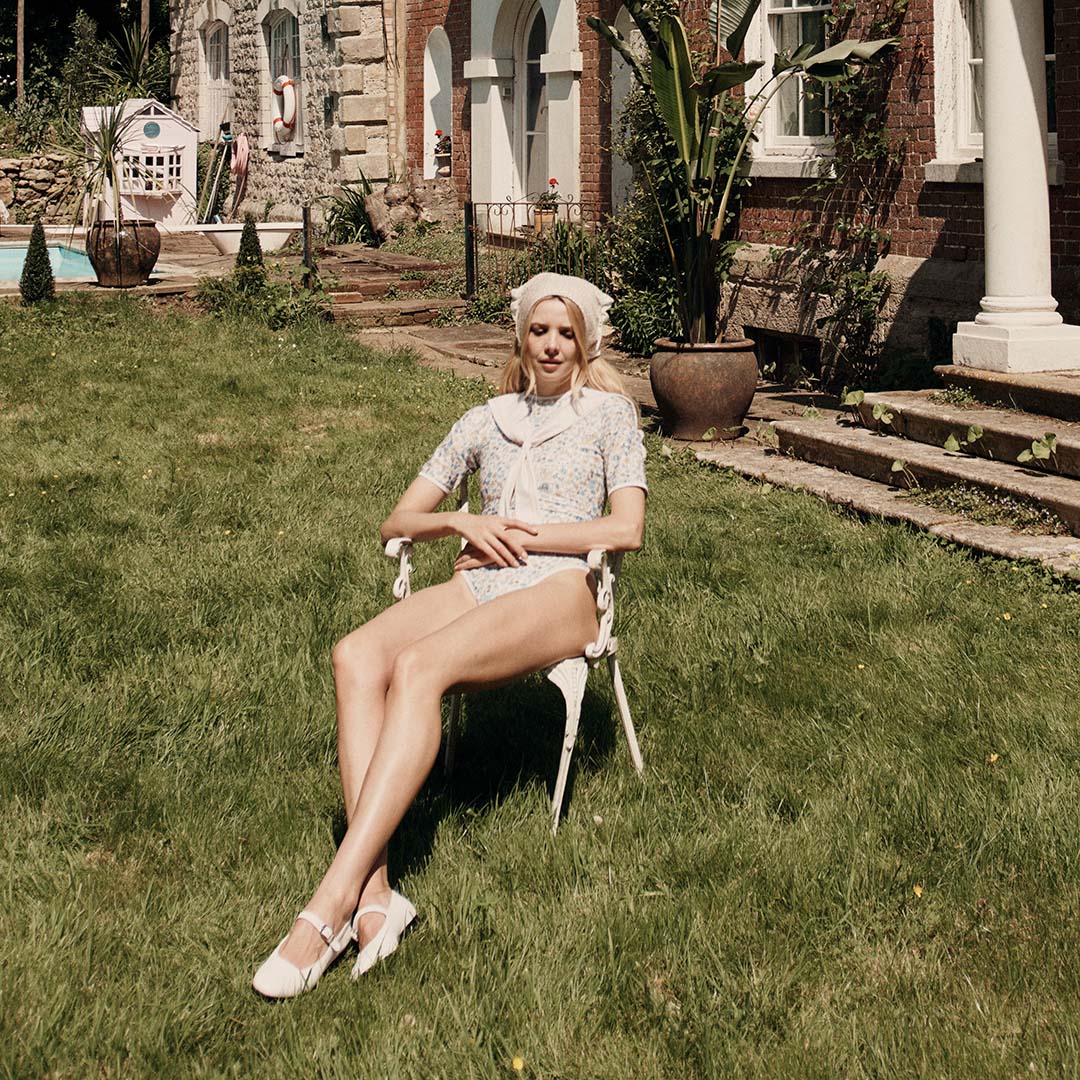
JENNY MANNERHEIM: You have just embodied the new SEABASS collection, pieces handmade from recycled materials. Could you talk a bit about this experience? The style names are “Nice” and “Capri,” referring to the Riviera lifestyle. Tell us about the Riviera look.
GRETA BELLAMACINA: It was one of those days when life is exactly as you want it to be. The sunlight was painting the sky, geraniums in pots, country roads beyond. The children were running between the garden and the house. I guess when I think of the Riviera, I think of this way of life. Your body follows the sunlight around the garden. SEABASS really embodies this feeling. The swimsuits have this nostalgic, cinematic quality. It's a dream to wear them because they transport you to a gentler and more elegant time, where dressing up is more about living.
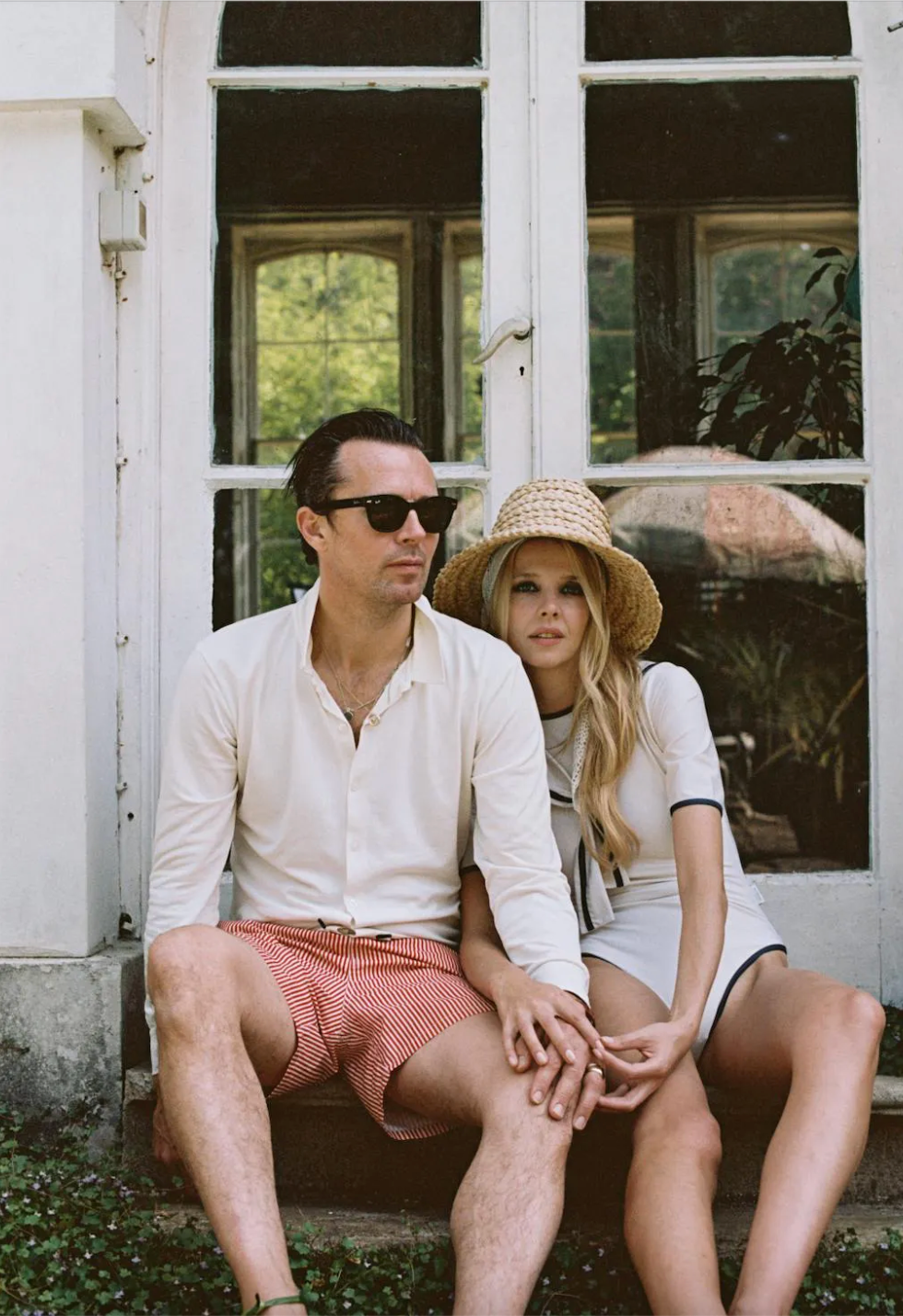
M: You photographed the collection in a magical place in Kent, your home, which resembles the Riviera. Is the Riviera more of a lifestyle concept than a place?
GB: Yes, that’s true. We moved to Kent three years ago and found this beautiful old house that had been quite neglected. The house is unusual because it’s not so far from London, but when you enter through the iron gates, it feels like being in Europe. Nothing has been overdone, just restored to its original state. The trees are still overgrown, one side of the garden has been totally left wild. We spend a lot of time between both sides, following the sun. A morning coffee in one corner and an evening drink in another. This lifestyle makes me feel like I am paying homage to my Italian heritage.
JM: We call this 'NEO RIVIERA' fashion, it’s like DOLCE VITA, it’s a style more than a place...
GB: Before shooting the campaign, I shared with Kayleigh, the founder and designer, the iconic images of Sophia Loren at home in Rome with her husband and children. I think it was a shoot she did for Life Magazine in the 60s. She loved them as much as I did, and we decided to draw inspiration from them. I’ve always loved these images of strong women in their domestic space. Their way of living is an art. It’s not about the place, it’s about them. I think that’s what Dolce Vita is, it’s living in your art. Sophia always did that.
JM: We did a shoot together in St. Barth with clothes from the brand Jacques Zolty, which just opened a store in St. Tropez. Tell us about the Zolty collection, we saw that you and Rob were wearing the styles during your vacation...
GB: It was so magical to be together in St. Barth, it was a miracle that we could go so far. I loved that day at the beach, finding pieces of driftwood and little shells. Wearing matching Zolty pieces with Robert. The sea air blowing through the linen, the scarves we tied around our hair, and Robert wore a tie. The blue beach bag that I’ve now taken on all my beach trips this year, it reminds me of a rare butterfly from another era with its sixties typography and faded blues.
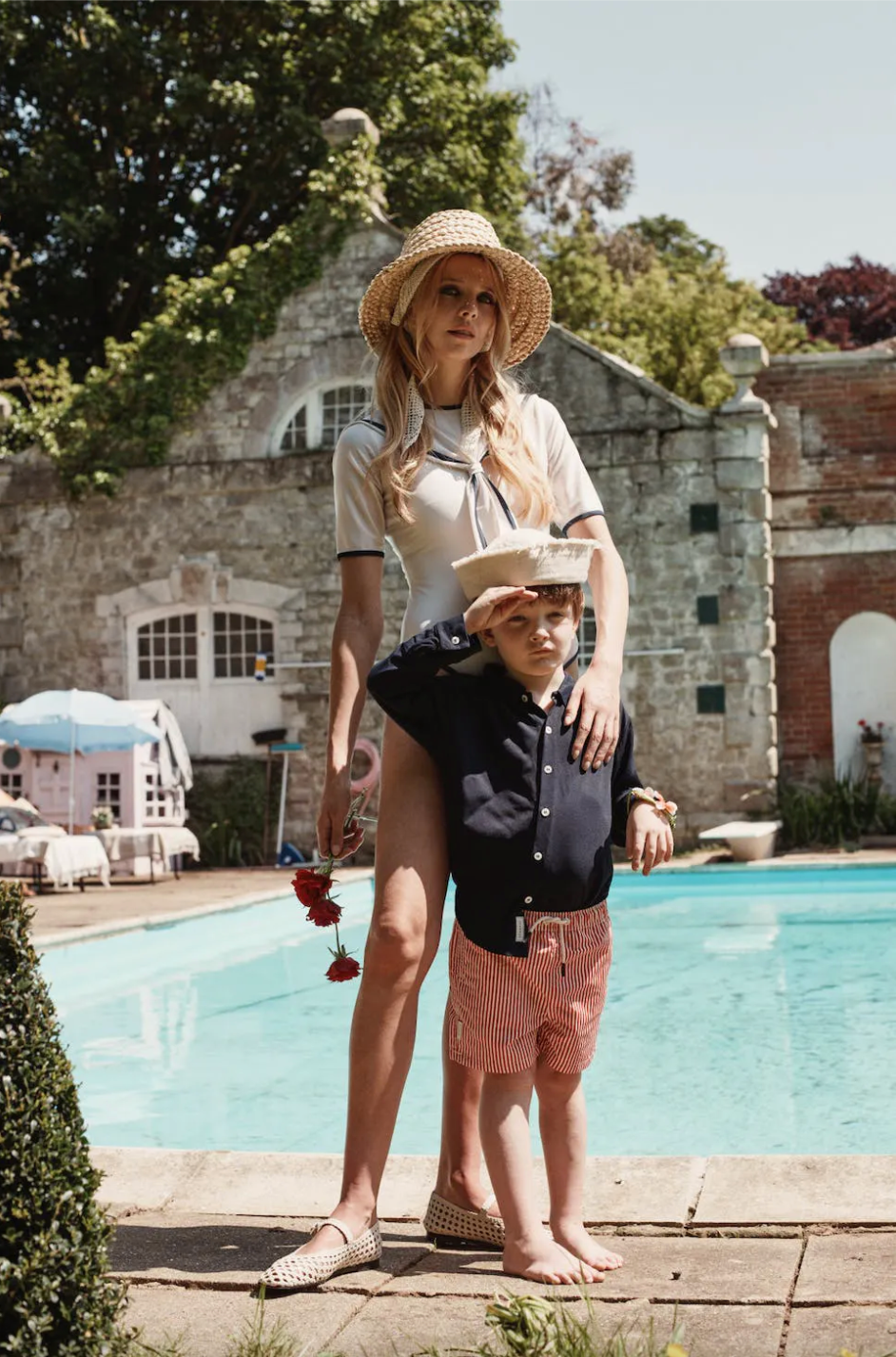
JM: You star in the film “Tell That To The Winter Sea,” which you co-wrote. How did you experience the writing process for the film?
GB: The process was a true joy. I was fortunate to act in some of director Jaclyn Bethany’s early films in Los Angeles, and we have remained friends since then. We’ve built a decade-long friendship around us, and the film was written with a sort of time-lapse that reflects this journey. The story is about two friends who grow up in the same small town as best friends and become each other's first loves, but later, a decade later, they meet again, transformed but still the same. The film is a kind of bittersweet love letter to friendship and first love, reflecting on the big dreamers we were as teenagers but also on the new people we become. We wrote the film across two different time zones, which I think helped. I wrote the first ten pages every day, and then Jaclyn, who was in Mississippi, wrote ten more pages... then in the meantime, we would talk and debate.
JM: Much of your poetry in your new book “WHO WILL MAKE THE FIRE” uses nature as a reference. Could you describe your connection to nature and its use in your poetry?
GB: There is a line that says, "She takes back the wood from the trees in ashes and walks in bewilderment / her dress touches the sea. Darkness empties into the angels / suffering something / that takes her to the skies.” This strange cycle that lives around us and within us is what I wanted to explore as a means to better understand darkness. I started writing these poems with the idea of writing a "biography of the wind," using the wind as a metaphor for our evolving states of mind. A way to explore the battles we keep closed within us. But as I continued writing the poems, I became more interested in the cycles of things, like the cycle of a flower, the continuous cycle of dawn, the cycle of spring... These cycles are the antidote to pain and war and struggle. There is a line in the title poem that says, "to let death give birth like the sea / the sea an eternal child / tangled in a deep well of rainwater.”
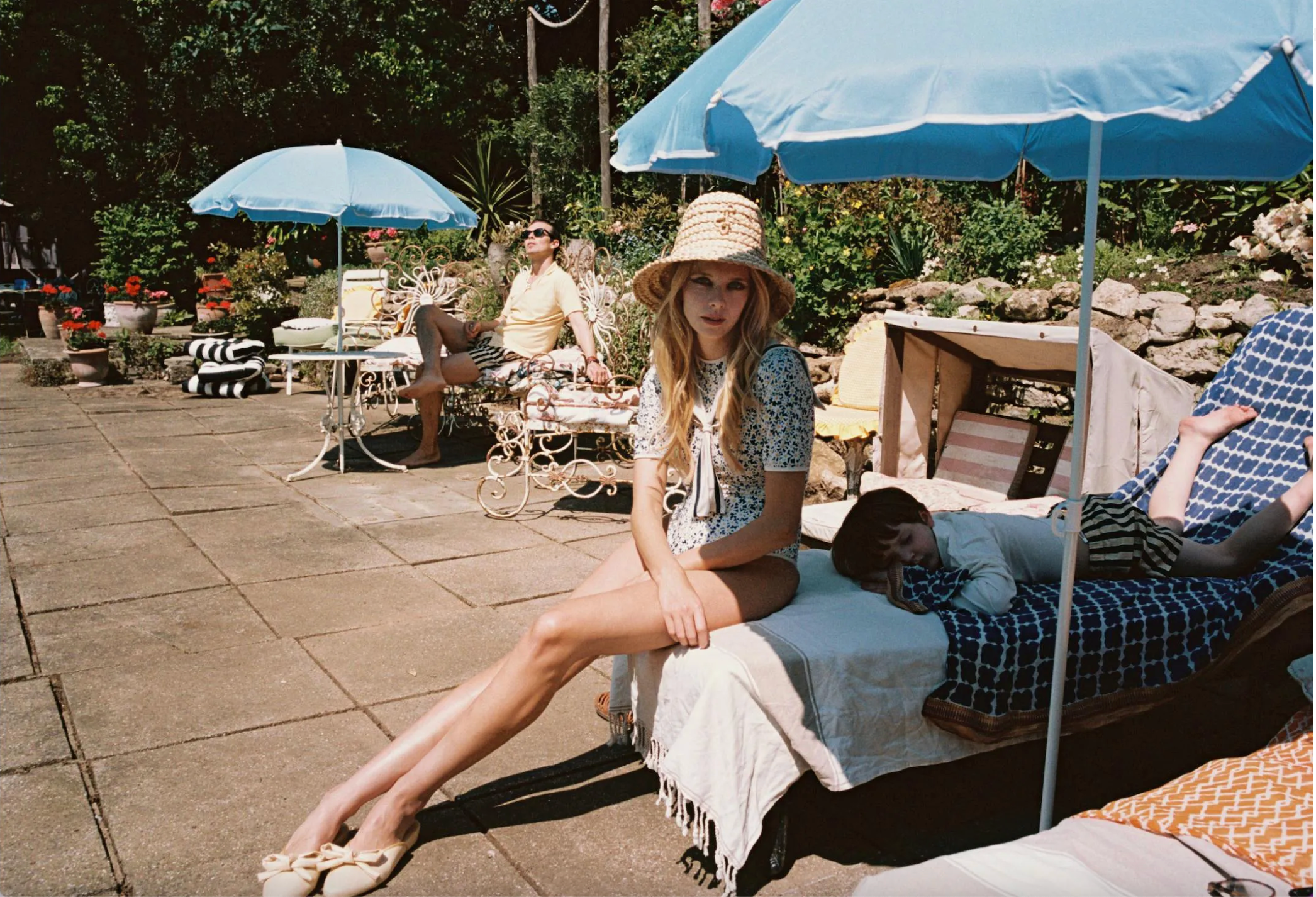
JM: You frequently work with your husband Robert Montgomery, having co-founded New River Press together in 2017. Tell us about your family publishing house.
GB: We founded the press in 2016 - at the time, we seemed to be surrounded by many poets we loved who were not being published. Perhaps because the work was too political, too avant-garde. But also young poets who felt excluded. We were living in a small apartment near Virginia Woolf's former home on Fitzrovia Square. We spent a lot of time in the square because our apartment was so small, walking our first son Lorca in the stroller. We discovered that Virginia had created Hogarth Press in this house with her husband. They published Virginia's "Mrs. Dalloway" and T.S. Eliot's "The Waste Land" from their dining room. We didn't have a dining room, so we decided to do it from our sofa... As a tribute to them but also as a way to publish contemporary poetry. The new book from New River Press, "Albion: An Island On The Verge Of Madness," is a collection of works by 11 contemporary poets, which we launched at the Shakespeare and Company bookstore in Paris earlier this year.
JM: You also have another film in preparation, “Things And Other Things,” directed by Riccardo Vannuccini, the sequel to “Commedia,” where you reprise your role as Irene. What is it like returning to this character a second time?
GB: As an actress, it has been a true privilege to work with a real auteur. Every part of the process is poetry. There is also a sense of freedom, working with someone who doesn't just see cinema but rather a world and a heart. Working on two films together in two different languages is very special. Our first film, “Commedia,” was shot in Rome and I play a mental patient, and we worked with dialogue but also a lot with movement theater as a visual means to explore pain. The second film, “Things and Other Things,” was completed last December and we shot it in Tuscany, in the countryside. The film is dedicated to imagination. We filmed entirely in abandoned buildings, a theme park, schools, hospitals... it's a film about what we are forced to imagine when everything is gone. I loved working with an entirely Italian team too, there is real joy in the way things are done. I can't wait for the world to see this film.
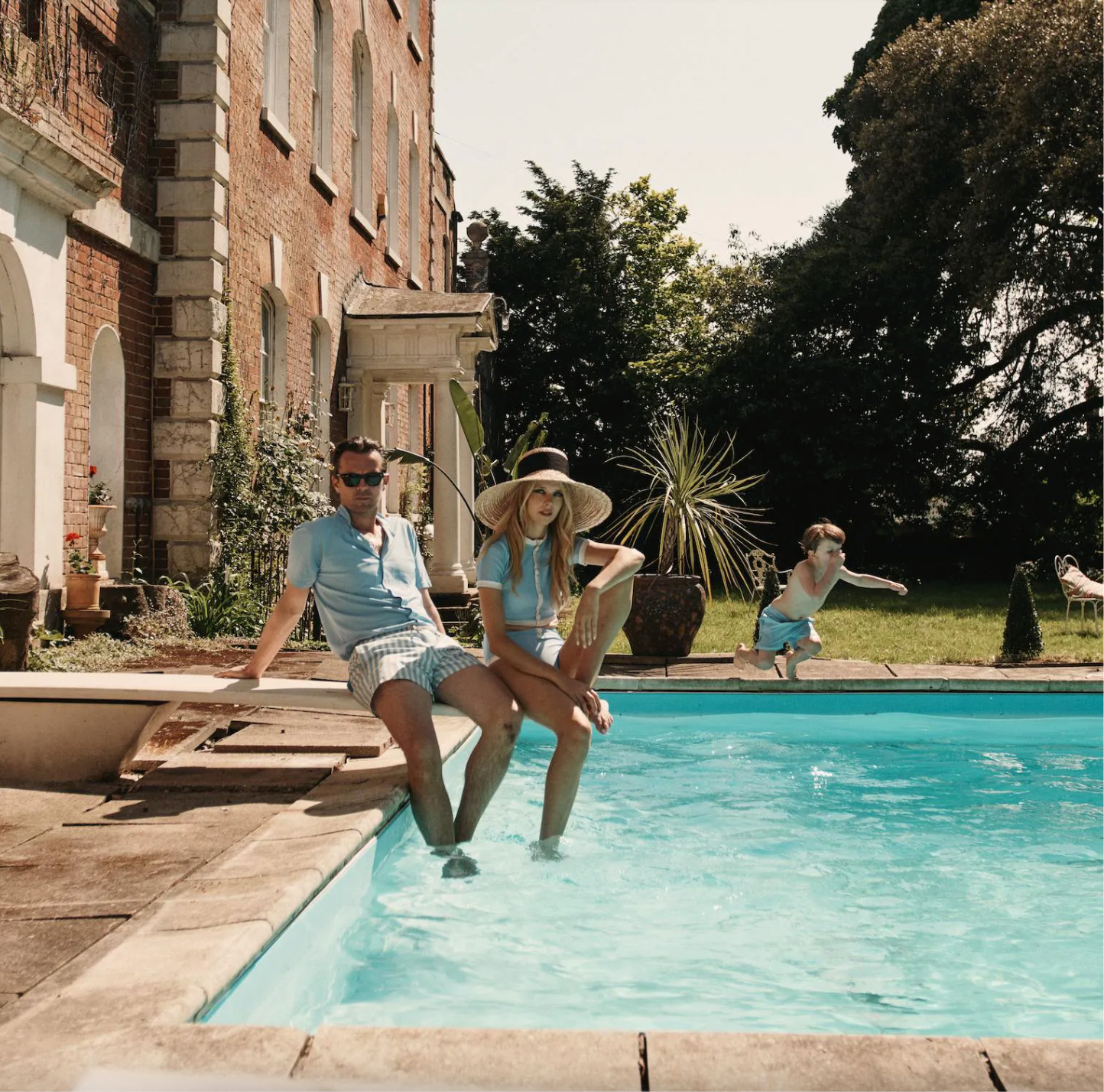
JM: You are a "chameleon" in terms of artistic expression across different mediums. How do you choose the projects you participate in? Is there a particular artistic medium that has recently inspired you?
GB: It's mainly a question of the subconscious. Both acting and writing are places of reflection for me. I am currently preparing for a new role in a film called "All Five Eyes". The film is about what it means to take care of someone at a time when a disability was not recognized. It's a portrait of three sisters; I play the sister who shows her affection through a strict routine and rules. The films I like to create are messy and strange, less focused on plot and audience. I enjoy creating works that are more a translation of our illogical minds. Often, emotions take over and suddenly nothing makes sense.
an exclusive collection
Women cruise '24 - Starring Greta Bellamacina


